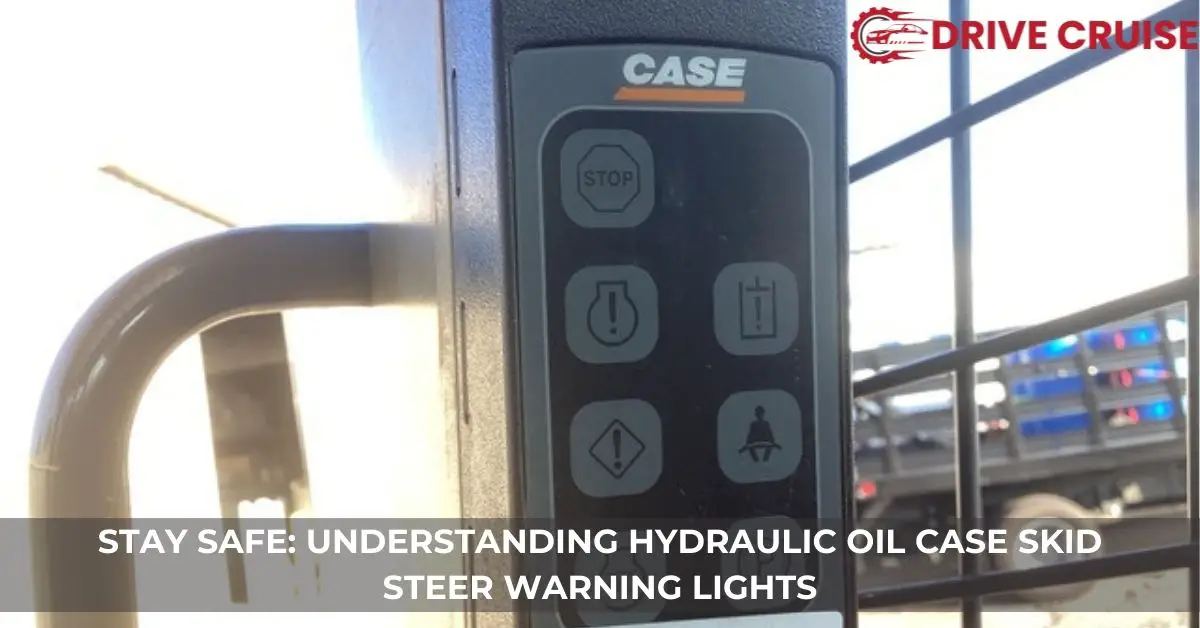Navigating the world of skid steer loaders, we’ve all encountered those moments when a warning light flickers on, sending a wave of concern through our minds. Especially when it comes to the hydraulic oil system, these lights are not just indicators; they’re the silent guardians of our machinery’s health. They tell us stories of what’s happening beneath the robust exteriors of our skid steers, often hinting at issues that need our immediate attention.
Understanding these warning lights is crucial for anyone who operates or maintains a skid steer. It’s about more than just keeping the equipment running smoothly; it’s about ensuring safety and efficiency on every job. So, let’s dive into the world of hydraulic oil case skid steer warning lights together, unraveling the mysteries behind those glowing symbols and what they mean for our beloved machines.
Common Issues Indicated by Warning Lights
In this section, we’ll explore the common issues signaled by hydraulic oil case skid steer warning lights. These indicators serve as the skid steer loader’s way of communicating potential problems. By understanding what each light means, operators can address issues before they escalate.
- Oil Temperature Warning: This light comes on when the hydraulic oil temperature exceeds its normal operating range. It suggests the hydraulic system is working harder than it should, possibly due to excessive load or a malfunctioning cooling system. Ignoring this warning can lead to oil degradation or hydraulic component failure.
- Oil Pressure Warning: A critical light indicating either too high or too low hydraulic oil pressure. Low pressure might suggest a leak or a failing pump, while high pressure could indicate a blockage or malfunctioning relief valve. Correct pressure is vital for the hydraulic system’s efficiency and longevity.
- Filter Condition Indicator: When this light illuminates, it’s a sign the hydraulic oil filter is clogged or nearing its capacity. A clean filter ensures contaminants are removed from the hydraulic oil, protecting the system from wear and damage. Changing the filter when this light appears is crucial to maintaining a healthy hydraulic system.
- Fluid Level Indicator: This warning light alerts operators to an incorrect hydraulic fluid level — either too low or sometimes too high. Low fluid levels can lead to air entering the system, causing damage to hydraulic components. Maintaining the correct fluid level is essential for smooth operation and preventing costly repairs.
How to Respond to Hydraulic Oil Warning Lights
When hydraulic oil warning lights illuminate on your skid steer loader, it’s crucial to take immediate action to prevent damage and maintain the machine’s safety and efficiency. Here’s a step-by-step guide on how to respond effectively.
- Identify the Specific Warning Light: First, determine which hydraulic oil warning light is on. Each light, whether it signals temperature, pressure, filter condition, or fluid level, requires a specific response.
- Check the Hydraulic Oil Level: If the fluid level warning light is on, shut down the machine safely and check the hydraulic oil level when the engine is cool. Top it off with the correct type of hydraulic oil if it’s low.
- Inspect for Leaks: Leaks can lead to low oil levels and pressure. Inspect hoses, fittings, and seals for any sign of leakage and repair them as needed.
- Evaluate the Oil Temperature: Should the temperature warning light activate, allow the machine to cool down before inspecting. High temperatures can indicate overuse or insufficient cooling.
- Assess the Hydraulic Oil Filter: A clogged filter warning light necessitates checking and replacing the hydraulic oil filter. A clean filter ensures proper flow and function of the hydraulic system.
- Monitor the Oil Pressure: Abnormal pressure warning lights demand a check of the hydraulic oil pump and relief valves to ensure they’re operating correctly. Adjustments or replacements might be required if pressures are beyond recommended levels.
- Consult the Operator’s Manual: For specific warning lights and issues, the operator’s manual is an invaluable resource. It provides detailed responses tailored to your skid steer model.
- Seek Professional Help: If you’re unable to diagnose or solve the issue, contacting a professional technician is vital. They can offer a comprehensive assessment and make necessary repairs.
Maintenance Tips to Avoid Warning Lights
Responding proactively to hydraulic oil warning lights on a skid steer loader is crucial, but preventing these warnings from appearing in the first place is even better. Regular maintenance plays a pivotal role in ensuring the longevity and optimal performance of skid steer loaders. Here are our top maintenance tips to help you avoid seeing those pesky warning lights.
- Check Hydraulic Oil Levels Regularly: Ensuring the hydraulic oil is at the correct level is essential. Low oil levels can lead to increased wear and tear, while excessive levels can cause overheating. It’s best to check the oil level when the machine is cold and has been at rest for a while to get an accurate reading.
- Use the Correct Hydraulic Fluid: Always use the type of hydraulic oil recommended by the manufacturer. Using the wrong type of fluid can decrease the system’s efficiency and increase the risk of damage.
- Change Filters Periodically: Hydraulic filters catch debris and contaminants that can clog the system. Regularly replacing these filters according to manufacturer guidelines helps keep the hydraulic fluid clean and the system running smoothly.
- Monitor for Leaks: Inspect hydraulic lines and connections for signs of leaks regularly. Even a small leak can lead to significant loss of hydraulic fluid over time, affecting the system’s pressure and potentially damaging components.
- Monitor Operating Temperature: Keep an eye on the hydraulic system’s operating temperature. If it consistently runs hot, it might be a sign of an underlying issue that needs addressing to avoid further damage.
- Follow a Regular Maintenance Schedule: Adhering to a structured maintenance plan outlined by the manufacturer helps in identifying and addressing potential issues before they escalate. This schedule includes regular inspections, fluid changes, and parts replacements.
Related Posts:
